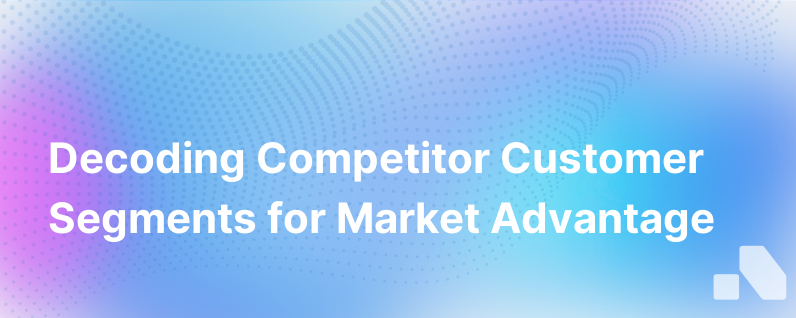Competitors Customer Segments
Published on January 1, 2024 by David Zhang
Doing business in a hyper-competitive marketplace requires a deep understanding of who your competitors' customer segments are and why they choose the competition over you. With an intimate grasp of their behaviors, preferences, needs, and pain points, you're better equipped to design a more compelling value proposition. To better serve your prospective customers, it's time to dive deep into your competitors' customer segments.
Let's unpack what it means to analyze competitors' customer segments, why it's pivotal for business growth, and how to organize and leverage this information effectively.
Competitors' Customer Segments Defined
Competitor customer segmentation is the process of identifying, analyzing, and understanding the diverse groups that form your competitors' clientele. These groups or segments can be defined based on various behavioral, demographic, psychographic, and geographic factors. The goal is to grasp what types of customers your competition might be serving better than you and devise strategies to enhance your offering.
The Importance of Analyzing Competitors' Customer Segments
Understanding your competitor's customer segmentation is pivotal for several strategic reasons.
-
Identify Gaps: By pinpointing who your competitors serve, you can identify underserved segments in your current customer base. These gaps become opportunities for targeted growth and innovation to fill unmet demands.
-
Improve Product Development: Informed by competitors' customer segments, your product development can be more strategic and meet specific customer needs better than your competitors.
-
Enhance Marketing Efforts: Effective marketing begins with knowing your target audience intimately. By assessing competitor segments, you can refine your messaging, communication channels, and overall marketing strategy.
-
Boost Sales and Revenue: The insights gleaned from competitor customer segments can help shape your sales tactics. Customizing your selling approach for each segment can lead to higher conversion rates and, subsequently, revenue growth.
How to Analyze Competitors' Customer Segments
Here are crucial steps to follow when analyzing your competitors' customer segments:
-
Identify Your Key Competitors: Start by drawing a list of your key competitors, focusing primarily on direct competitors that share similar market segments with your organization.
-
Segment Their Customers: Break their customers down into identifiable segments. These can be based on different variables such as location, age, purchasing behavior, income level, occupation, or lifestyle.
-
Conduct Customer Research: Carry out primary and secondary research to glean insights into each segment. This can involve surveys, interviews, social media listening, online reviews, testimonials, case studies, and other research methods.
-
Identify Key Trends: Look for patterns that indicate why customers prefer your competitors. These may include pricing, customer service quality, product features, or branding and reputation.
-
Evaluate Your Offerings: Compare your product or service offerings with what your competitors offer their customers. Look for strengths to capitalize on and weaknesses to address.
Case Study Approach
An effective approach to analyze competitors' customer segments is through case studies. Take a deep dive into successful implementations that your competitors have carried out with different customer segments and understand what worked for them. Looking for case studies that align closely with your offerings, compare and contrast the key ingredients of their success.
Adopt Agile Segmentation
Even after a thorough analysis, remember that customer expectations and needs can change over time. It's essential to adopt an agile segmentation approach, continually learning from your competitors' successes and failures, and adjust your strategy based on these insights.
Leverage AI for Efficient Analysis
Conducting thorough competitor analysis manually can be time-consuming and resource-demanding. AI platforms like Aomni provide an automated solution that aggregates and analyzes crucial data in real-time. It offers actionable competitive insights and personalized sales content faster, enabling you to stay ahead of the competition.
Conclusion
Analyzing competitors' customer segments is key for any business looking to outperform the competition. It offers rich insights into different customer groups, revealing opportunities for growth, product improvements, better marketing, and increased revenue. By using an AI platform like Aomni, organizations can analyze competitors' segments more efficiently and effectively, staying one step ahead in the competitive marketplace.